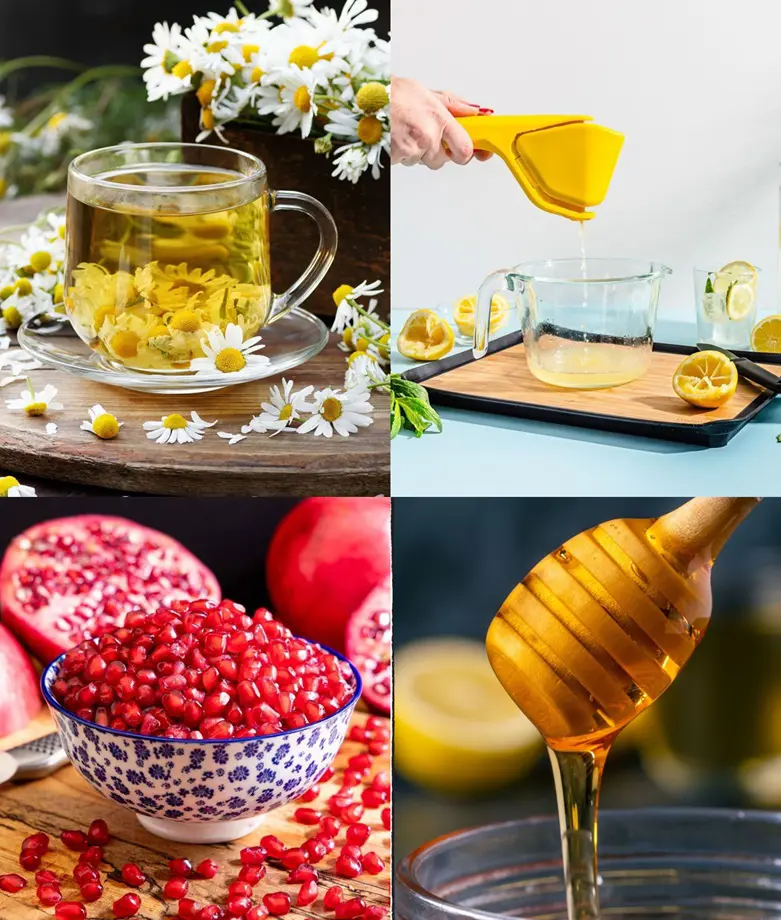How To Eat A Kiwi? Tips on Peeling, Cutting and Recipes
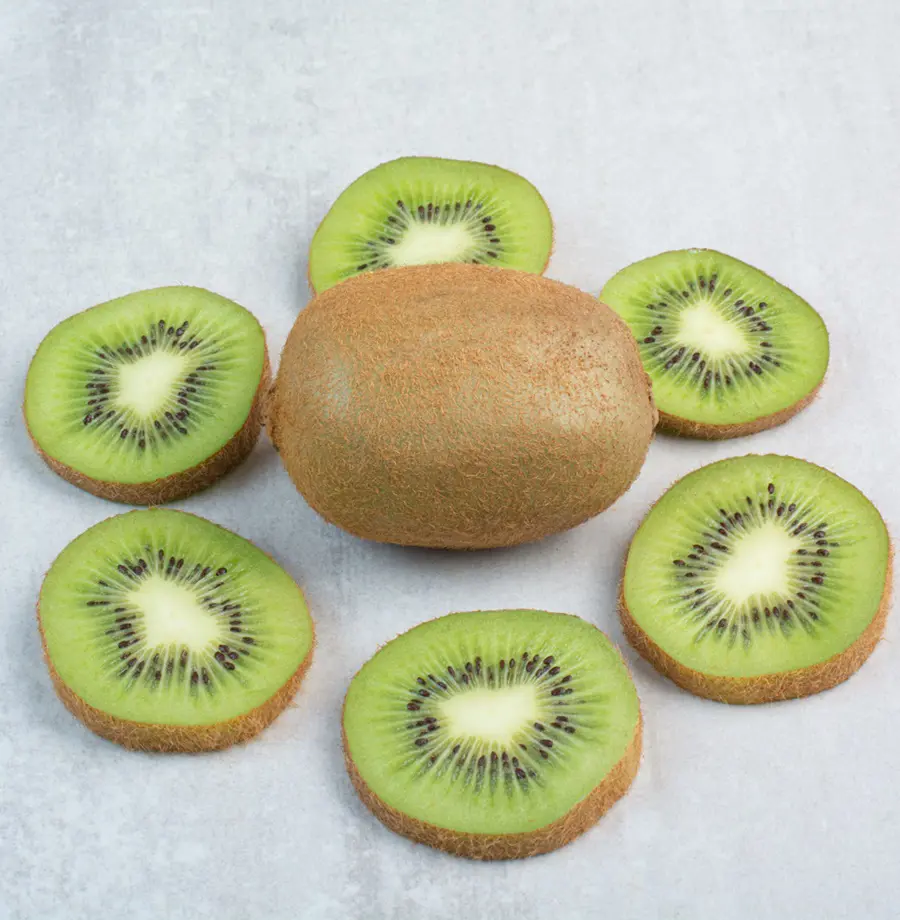
This post may contain affiliate links. If you make a purchase through links on our site, we may earn a commission.
Kiwis, with their green skin and juicy acidic pulp, are not only tasty but also contain many nutrients. However, preparing this fuzzy fruit might raise many questions for individuals concerning the best ways to prepare it.
In this guide, we will take you through the best approach while peeling and slicing Kiwi to ensure the best taste and texture. In addition, we will provide you with some unique recipes that highlight this delightful fruit.
Choosing The Perfect Kiwi
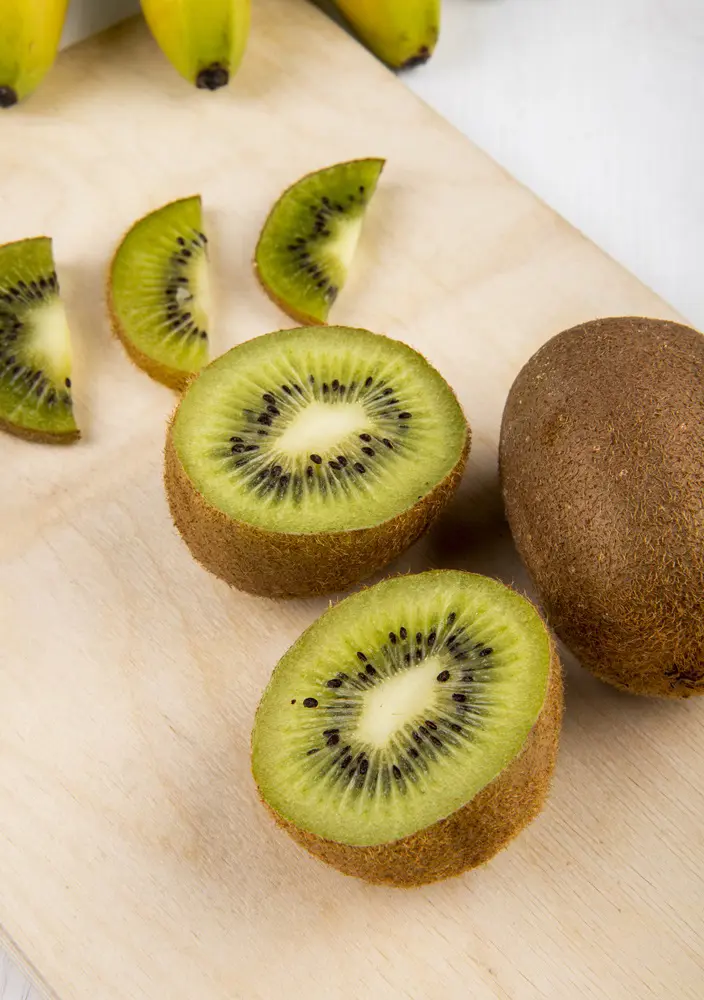
Choosing the right kiwi can change your eating pleasure at a moment’s notice. A perfectly ripe kiwi would be mildly sweet with a certain level of tartness while an under-ripe or overripe kiwi would be hard, sour, or soft respectively.
In this regard, here are the steps to follow to come across the best kiwi every time:
Check The Firmness
With a little more pressure, press the kiwi between your fingers. Kiwi is ready for consumption when the skin gives way to gentle pressure. It should not be as firm as an underripe kiwi, but not as soft as an overripe kiwi.
If you find some softness wherein you press the kiwi, then you will know that the kiwi is ripe enough for consumption.
Look For Smooth Skin
One of the signs that kiwi fruit is ready for harvesting includes having skin that is smooth and free from spots. The skin may look as if it is fuzzy but it is not supposed to be creased, warped, dusky or feature mold marks.
The skin’s texture is natural, and slight imperfections are okay, but avoid any fruit with large blemishes.
Color Of The Skin
The kiwi skin should be brown when the kiwi is ripe but there should be slight differences in shade depending on the breed.
For instance, the golden kiwi is shiny compared to the green kiwi, and its skin is also not as rough with a hairy feel as that of the green kiwi. As long as the skin is still firm and not overly shrunk, chances are it is ready to eat.
Smell The Kiwi For Signs Of Ripeness
When the kiwi is ripe it should have a fruity and good aroma to it. The smell should be sweet but not intoxicated or even sickening sweet; it should just be natural.
However, if it is really close to sickeningly sweet, the kiwi may well be overripe. If it does not have any smell at all then it is still not ripe enough.
How To Ripen A Kiwi

If you bought an underripe kiwi, put it into a paper bag for ripening at room temperature. You can include a banana or a ripened apple to help the kiwi ripen faster.
You can check it daily by simply palpating it and feeling for intermuscular consistency to see if it has become softer. Once it accomplishes the right firmness, it is recommended to place it in the fridge in order to keep it from ripening.
Peeling A Kiwi
Quite obviously, ripping off the skin of a kiwi might pose a certain level of difficulty when you have to deal with the fur-like coating at first but, once you understand how it is done, it takes no time to slice this beautiful tasty fruit.
From cutting to eating, or scooping to slurping, there is a technique to enjoy kiwi for everyone. Here are three popular ways to peel a kiwi:
Using a Knife
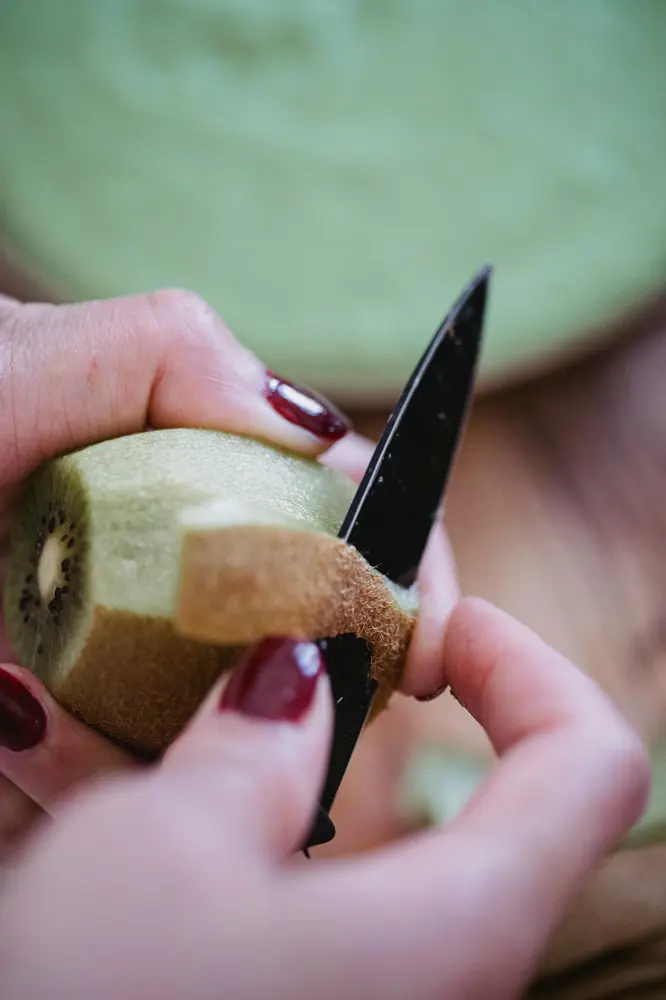
The knife technique is the most preferred and accurate way of peeling kiwi fruit and it eliminates the chances of damaging the fruit and gives you tender kiwi flesh to consume.
Cut Off Both Ends: First, position the kiwi on a cutting board. Using a clean and sharp knife, cut off both the stem end and the opposite end of the fruit.
Peel in Strips: Take one of the flat sides of the kiwi and hold the fruit upright. Beginning at the crown, gently scrape the blade downwards following the curve of the fruit, cutting off the skin in thin strips.
Trim Excess Skin: If there are still some remnant skin portions left, they must be cut off with a knife. Your kiwi should by now be perfectly peeled and ready for slicing or eating!
Using a Spoon
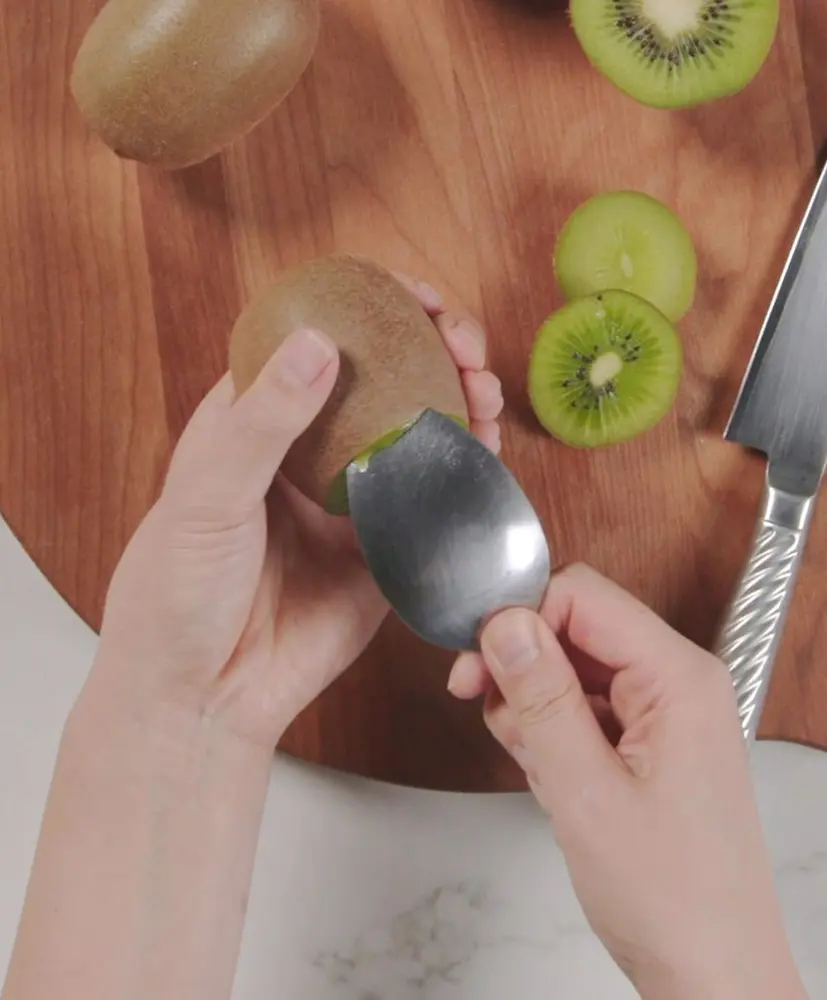
Using a spoon is quite easy if the knife seems too much effort or if you want a faster method of peeling. This method is highly effective for those who are comfortable with leaving a little skin in place at the corners.
Cut Off Both Ends: Like in the knife method, you should cut the kiwi at the extremities to produce a flat baseline.
Insert a Spoon: Take a normal teaspoon and gently insert it between the flesh and the skin. Starting from where the slices were made, place the spoon at the sides of the kiwi and scoop around it, peeling the skin away from the flesh.
Scoop the Flesh: After the spoon is placed completely around the fruit, you can then use the same spoon to take out the whole piece of flesh in one go. What is left is the skin of the kiwi, and the fruit in its whole state, which can then be cut or devoured as a whole.
Using Hands
For those who prefer not to use utensils, the most natural way of having a kiwi is to peel it with your own hands.
Use a Ripe Kiwi: Ensure that your kiwi is ripe and a little soft though not mushy. If kiwis are unripe or too hard and firm, they will not come off by hand.
Pinch and Pull the Skin: With clean hands, use the thumb and index finger to pinch the skin of the kiwi at one extremity. The peeling should be done in small chunks from the upper part of the fruit towards the bottom. You can tear it off in strips with your thumbs like how you would peel the skin from an orange.
Eat or Slice: When peeled, kiwi can be eaten whole or possibly chopped into slices. This method is easier than the knife or spoon ones but still makes a mess on the palm a bit more.
Cutting A Kiwi
So after peeling your kiwi, what do you think is next? Yes, you guessed it right! It’s time to cut it! If you are going to use kiwi for fruit salad, or slush, or you simply want it to look more appetizing, there are several ways you can do it. Here are some popular techniques:
Round Slices
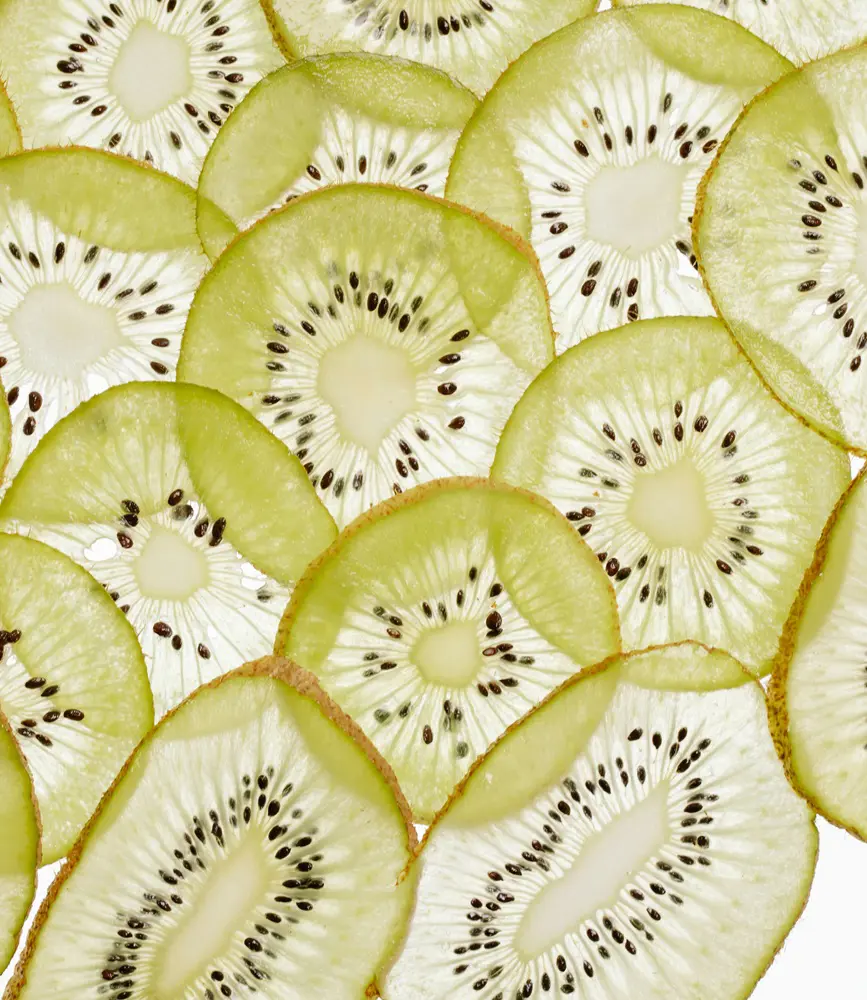
Cutting kiwi into circles is the usual method of preparing it to use in fruit salads, snacks, or garnishing for meals such as yogurt, and oatmeal.
For this, put the kiwi on a cutting board once you are through with the peeling process. Cut the kiwi thin in slices using a sharp knife depending on your desire. The slices will be pretty round and you will be able to see the tiny black seeds in the middle. This makes it ideal when used for garnishing or to make a decorative design on the meal.
Lengthwise Slices
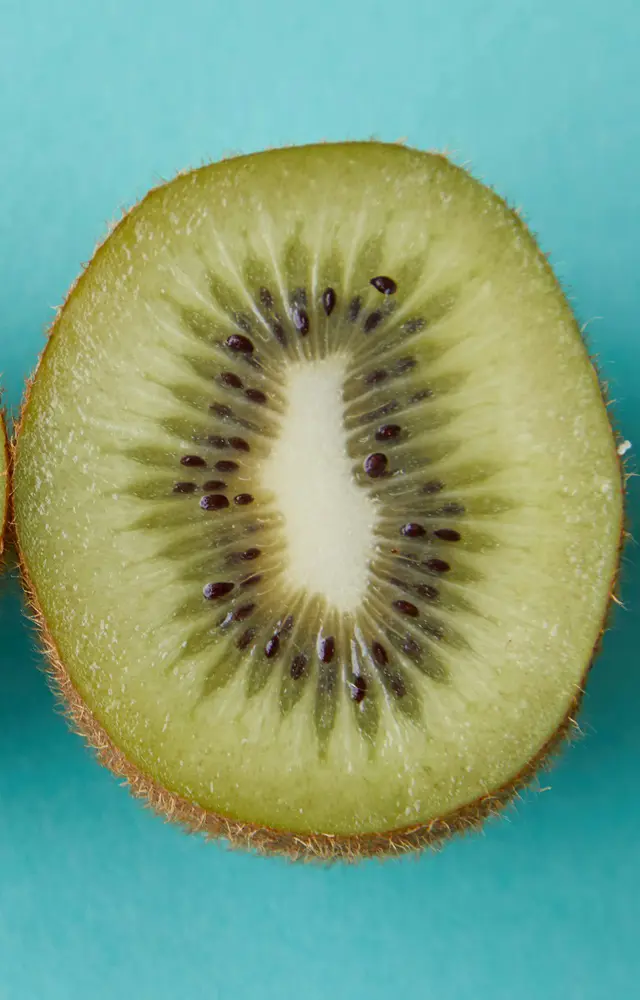
Slicing kiwi vertically or horizontally means that you get the long oval pieces that may be ideal for some presentation or indeed for blending to accommodate the large pieces in the smoothies.
When you are done peeling the kiwi, put the fruit on the cutting board and cut it in half from the stem end to the other end.
Dicing The Kiwi
Kiwi fruit can be diced in case you are preparing fruit salad or blending it with other fruits to form a smoothie.
Once the skin of the kiwi has been removed, use a knife to slice the fruit into rounds, ¼ – ½ inches each. Place the slices in a pile and cut them into thin strips in the lengthwise direction. Rotate the strips 90 degrees and cut again to obtain more uniform and tinier cubes.
Recipes
Kiwi is an exotic and colorful fruit that can be used to enhance the flavor of many types of desserts and other dishes. Prepare yourself to discover the versatility of kiwi to cook interesting and tasty cuisines!
Kiwi Smoothie
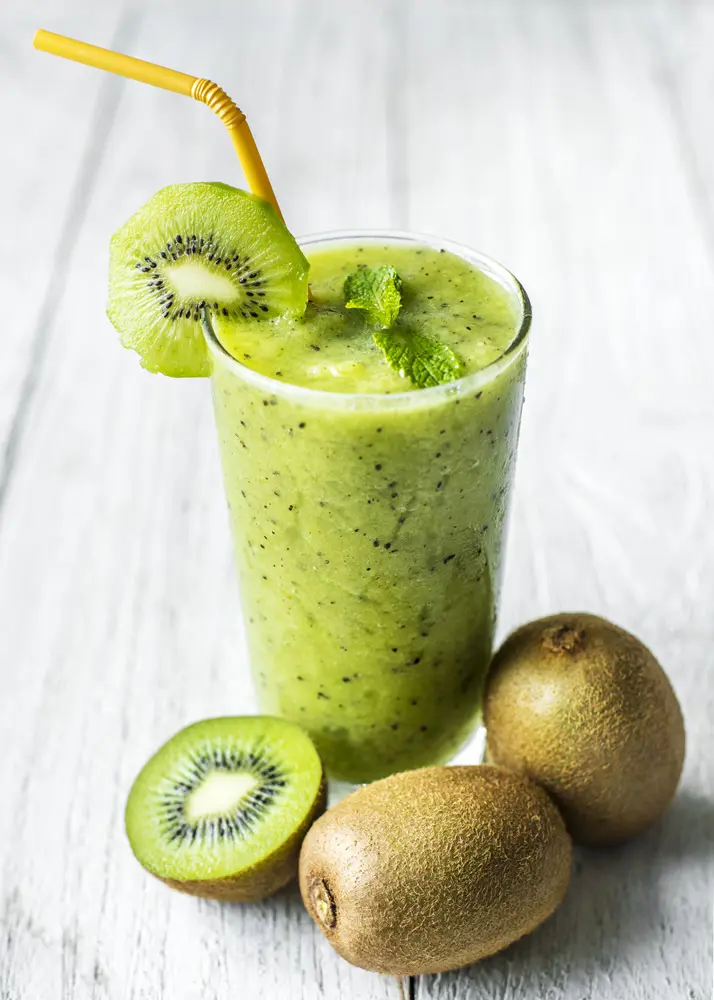
Kiwi fruit added to a smoothie will supplement and enhance its taste and nutritive value. Moreover, it is very relaxing and is suitable for any time of the day! Below is a tasty recipe you can make at home that will give you the Kiwi smoothie that you are looking for.
Slice 2 ripe kiwis and 1 banana. If using fresh pineapple, peel it and chop it into small pieces/cubes. Blend in the chopped kiwis, banana, pineapples and half a cup of Greek yogurt or coconut milk, half a cup of almond milk and spinach if using.
Blend until smooth. If it’s too thick, add some more almond milk to achieve the right consistency of the mixture. Take a sip of the smoothie, and if you deem it a bit too sour for your liking, go ahead and add some honey or maple syrup.
Kiwi Salad
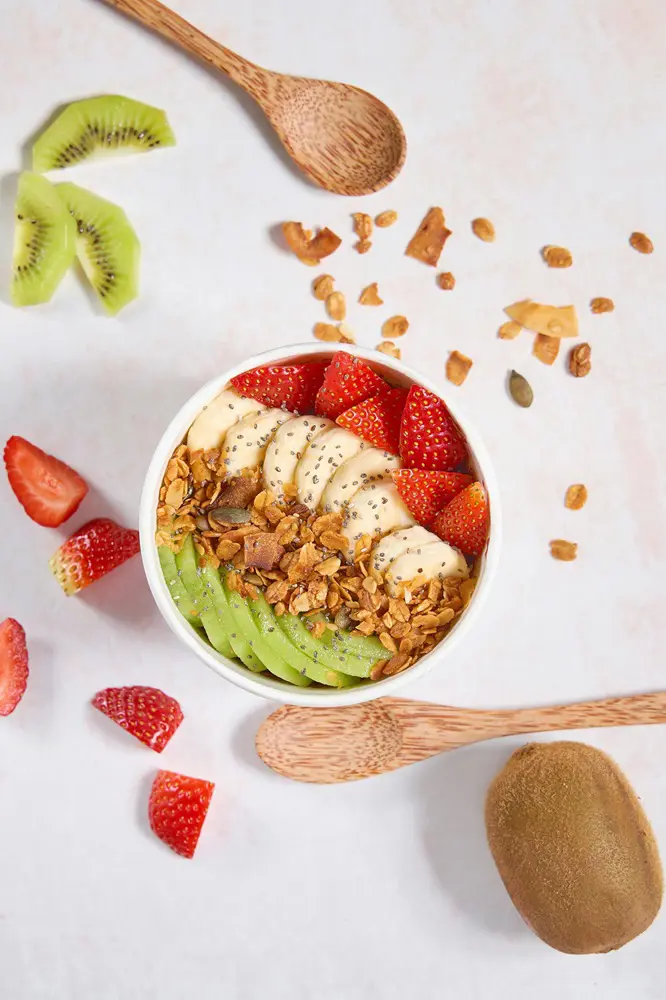
Kiwi salad comprises different elements mixed with the kiwi making it sweet and flashy enough to be taken as a dinner dish or a relishing side dish. Here's a refreshing and delicious Kiwi salad recipe:
Wash kiwi, peel and cut them into small pieces, chop the other fruits & vegetables and prepare the greens. Bring all the ingredients in a big bowl. Pour a dressing made from a blend of olive oil, lemon juice, salt and pepper over the salad and mix gently. Accompany with nuts like walnut or pistachio, or cheese like fetta if preferred, and serve.
Kiwi Dessert Cups
Kiwi dessert cups are simply a colorful and attractive no-bake dessert that celebrates the fresh flavor of kiwi. For preparation, you need to mash 2 kiwis with 1 tablespoon of sugar and cook the mix for 5 minutes. After the mix gets cooled, add 125g cream cheese, 2 tablespoons of sugar and ½ tablespoon of vanilla essence into a bowl and mix until the ingredients are smooth.
Whip the cream until the peaks come to a stiff and gently fold it into the cooled kiwi puree. In serving cups, put the cake crumbs at the bottom of the cups, followed by the kiwi cream mixture and finally decorate with slices of kiwi. Allow it to cool for at least an hour before serving and garnish it well using mint leaves.
Frozen Kiwi Pops
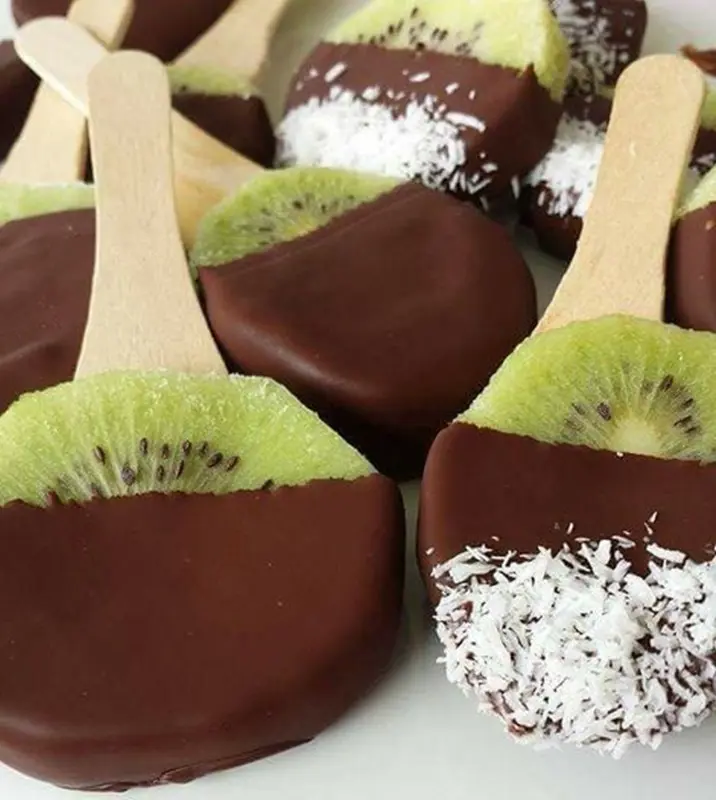
Kiwi pops made from frozen kiwis are enjoyable, especially in warm climates or as a good, healthy snack. These pops not only emphasize the freshness and vibrant taste of kiwi but can also inspire children to take fruit as a treat.
To make this, first, take 2 kiwis and peel and slice them into rounds about 1 cm thick. Take a popsicle stick, insert it through each kiwi slice, and freeze it for not less than 3 hours. If using chocolate, melt it and mix it with coconut oil, then dip the kiwi slices and put crushed nuts for toppings when frozen. Spread the mixture evenly on a baking sheet and return to the freezer until it is firm.
Kiwi Sorbet
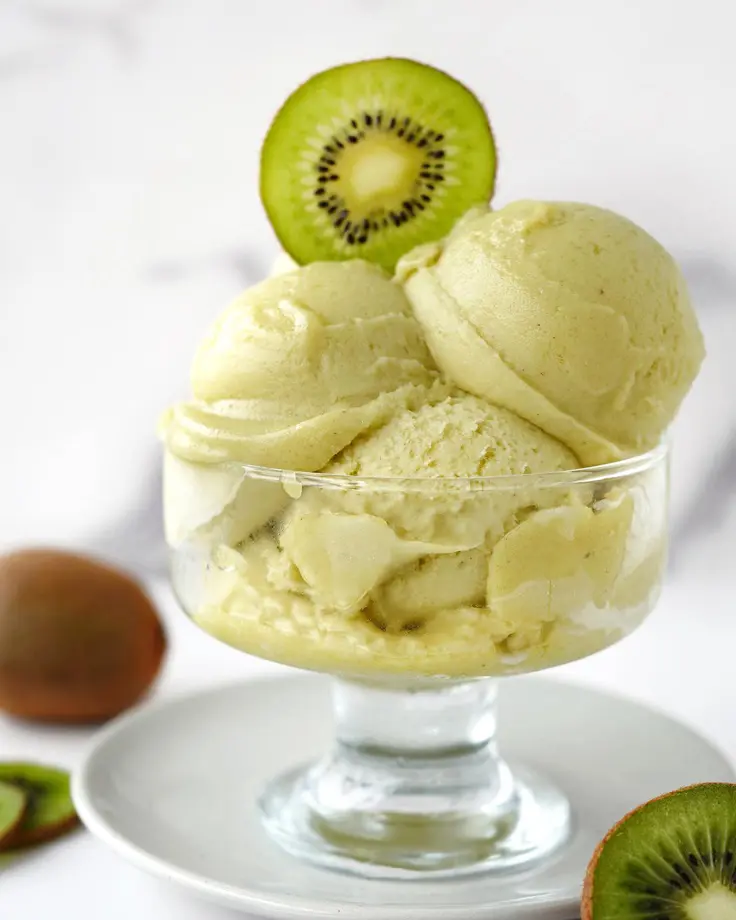
Kiwi sorbet is a type of frozen confection mostly prepared using ripened kiwis, famous for its green hue and tart-sweet taste. It is a popular dessert well known for being both fun and healthy during the hot summer and for its elementary recipe. Here's a quick guide on how to prepare this item:
Chop 8 pieces of ripe peeled kiwis, put them in a tray, and freeze until firm for about an hour. Process the frozen kiwi slices with honey, one tablespoon of lemon juice and four tablespoons of coconut milk in a food processor till they form a smooth paste. Serve immediately or transfer to another container and freeze for later use.
Tropical Kiwi Crumble
Here is another simple kiwifruit recipe that resonates well with kids. Tropical kiwi crumble is made from kiwi and sweet crumble topping.
In a bowl, combine flour, brown sugar, cardamom, rolled oats and salt. Add in some cubed butter and blend the ingredients in a way that will result in a coarse crumb-like texture.
In the other bowl, mix the minced kiwis and dust it with the granulated sugar to balance the tartness.
Transfer the kiwi mixture to a baking dish and sprinkle the crumble mixture on the kiwi one. Bake for 30-45 minutes until they become golden brown with bubbles. It is best served hot and ideally best eaten with coconut or almonds and ice cream!
Health Benefits Of Kiwi
Due to its characteristic nutrients and various health benefits, kiwi is commonly referred to as one of the superfoods. Here are some of the benefits associated with it:
- Boosts Immunity: While most popular for its vitamin C content with more than 100% RDA in a serving, kiwi is very important for the immune system to combat infections.
- Supports Digestive Health: The kiwi contains approximately 3 grams per fruit and is extremely beneficial for digestion and digestion-related issues.
- Weight Management: As it is comparatively low in calories but high in fiber, kiwi can be credited as a fruit that aids in weight control.
- Heart Health: The potassium and antioxidant content in kiwi is helpful in the improvement of heart health.
Recent posts
Lifestyle
Lifestyle
How to Get Rid of Neck Pain: 10 Home Remedies To Fix Stiff Neck
Neck pain is a common issue of today, affecting more than one-third population of the US. The common causes that often lead to stiff neck include sleeping in an awkward position that involves straining of the neck, sitting in a bad posture for long p...
Lifestyle
10 Home Remedies For Loose Motion and Diarrhea
When in tough times, due to issues like loose motion or diarrhea, it would be reassuring for you to know that there are remedies, that also in your own pantry! Whatever the cause may be, be it an infection, food intolerance, or stress, these ingredie...
Lifestyle
How To Eat A Star Fruit
Star fruit is a tropical fruit known for its unique star-like appearance. The fruit can be enjoyed simply, on its own or by adding it on recipes where its extra burst of color and sweet-tart taste can blend well with other ingredients. Whichever way ...
Lifestyle
Is Yogurt Good For You?
Yogurt is a dairy product, a nutrient-packed food. It is often hailed as a health food and there are good reasons for this. If we look into the nutrients present in yogurt; it has numerous of them essential for functioning of our body. In this articl...
Lifestyle
Is Vegan Diet Actually Healthy?
A vegan diet is considered healthy but not most of the time. As all vegan foods have many beneficial nutrients, they also lack some which often sparks the debate. Without animal products, a vegan diet can be believed to have significant health benefi...
Lifestyle
How To Eat Crawfish The Right Way
A crawfish is a small crustacean that resembles a tiny lobster. Though small in size, this freshwater creature is equally delicious as any other seafood, they are tender, sweet and a little salty. Enjoying crawfish may seem challenging as they are ti...

